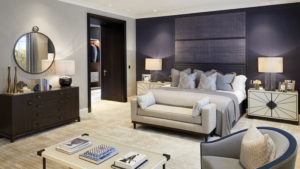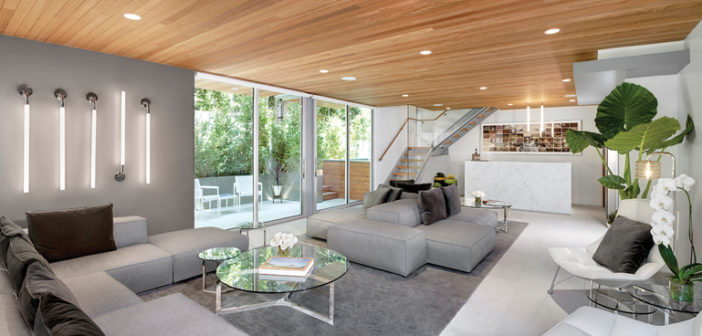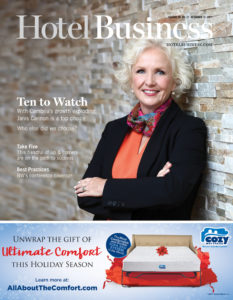NATIONAL REPORT—While the branded-residence concept dates back decades, it takes on new meaning today, as hotels and homes have increasingly influenced each other, and brands of all kinds have crossed verticals, truly inhabiting the lifestyle the original product evokes. These days, new entrants are seeing the appeal of branded homes, while long-established players are entering new terrain.
Barry Landsberg, VP, residential development Americas and owner benefits for AccorHotels, noted, “The concept of branded residences is now well over 20 years old, but had been limited to residences co-located with luxury hotels in select markets. The growth of branded residences has accelerated over the last number of years as consumers recognized the opportunity presented by aligning and extending their lifestyle through design, services and facilities that can embody the emotional and physical connections they have with these brands.”
And more brands are seeing the value. Take, for example, the first Mr. C Residences, which opened earlier this year next to the Cipriani family’s flagship hotel, Mr. C Beverly Hills in California. The five freestanding, four-story homes from architect Ray Kappe and Italian designer Marcello Pozzi—who also designed the hotel—extend the Venetian-influenced interiors found in the main property and offer owners access to the hotel’s concierge, spa, pool, fitness center, housekeeping and other amenities.
Mr. C Beverly Hills GM Sam Jagger noted that one of the reasons behind the decision to open the branded residences was the distinct lack of hotel residential inventory in Los Angeles. “To be first to market with a high-end offering, coupled with the rich history of service and amenities provided by the Cipriani family, was a natural addition to the success of Mr. C Beverly Hills,” he said.
Whether the brand will extend this strategy to other locations “will depend on where real estate opportunities present themselves in key feedback markets,” he said.
Determining whether a residential component will be a value-add to a particular project involves listening to the market, Landsberg said. “A good feasibility study will provide guidance on design requirements, including the number and sizes of residences and the associated residential facilities, offer direction on marketing and sales programs by identifying source markets and consumer price sensitivity, and provide initial development and operations pro formas,” he said. “We also encourage our development partners to sharpen their product design and marketing messages by conducting focus groups.”

Twenty Grosvenor Square, a Four Seasons Residence, will open in 2018 as the company’s first stand-alone residence.
There can be huge advantages to coupling branded residences with hotels. “From a developer perspective, the financial factors include offsetting development costs through the sale of the residential real estate, improving access to financing for upper-upscale and luxury hotel projects,” Landsberg said. “As well, the shared services between the hotel and residences allow for an equitable allocation of costs.”
For his part, Mike Crawford, president, portfolio management and owner relations, Four Seasons, added, “There are significant benefits to homeowners. Not only do they have the privacy of an exclusive residence, but can also step into a dynamic hotel environment with world-class amenities and service. Integrating the residential and hotel properties also creates synergies and efficiencies in management and operations. Our formula for both hotels and residential is to blend high-profile real estate, incredible architecture and design, and exceptional service.”
While Four Seasons has long been a player in the branded-residences space, the company is debuting something new: Along with Finchatton, an international design and development firm, Four Seasons Hotels and Resorts is opening its first stand-alone Four Seasons Private Residences in London’s Grosvenor Square in 2018.
Twenty Grosvenor Square, a Four Seasons Residence, will offer 37 residences serviced by Four Seasons employees, as well as amenities and services that Four Seasons guests expect. Crawford noted, “Twenty Grosvenor Square is an outstanding property with an excellent development partner, in an absolutely prime location in London, a city where we already have a very strong hotel presence. These are critical criteria in selecting stand-alone projects.”
As for how this move fits in with the long-term goals of Four Seasons Residences, Crawford said, “Growing our portfolio has always been focused on securing the very best locations in every market we are exploring, in collaboration with the right partners. Across both stand-alone and mixed-use projects, our objective is to also provide our homeowners and guests with the very best properties.”
Crawford noted that while there are some differences between completing a stand-alone project and a hotel/residences project, the main objectives remain the same: “It’s focusing on providing the right infrastructure and back-of-house facilities to enable Four Seasons to deliver the highest level of service in the most effective and efficient way possible to our homeowners,” he said. “The management structure of the building will also differ to a degree, although having a dedicated residential team remains consistent in all of our projects. The amenities and service offerings are more residential-centric, while hotels will, of course, typically have features such as banqueting and public-facing restaurant and bars.”
Going forward, what’s the outlook for hotel-branded residences? “We have seen substantial growth of the concept across our portfolio with more than 40 projects currently in the pipeline, so from our perspective the outlook is strong,” Landsberg said. “The focus will continue on the upper-upscale and luxury segments, but opportunities have also presented themselves in the midscale space. Whether or not hotel financing remains tight in the upper-upscale and luxury space, as long as the residences are designed to align with the desires of the consumer, hotel-branded residences will remain a highly valued fixture in the industry.” HB


